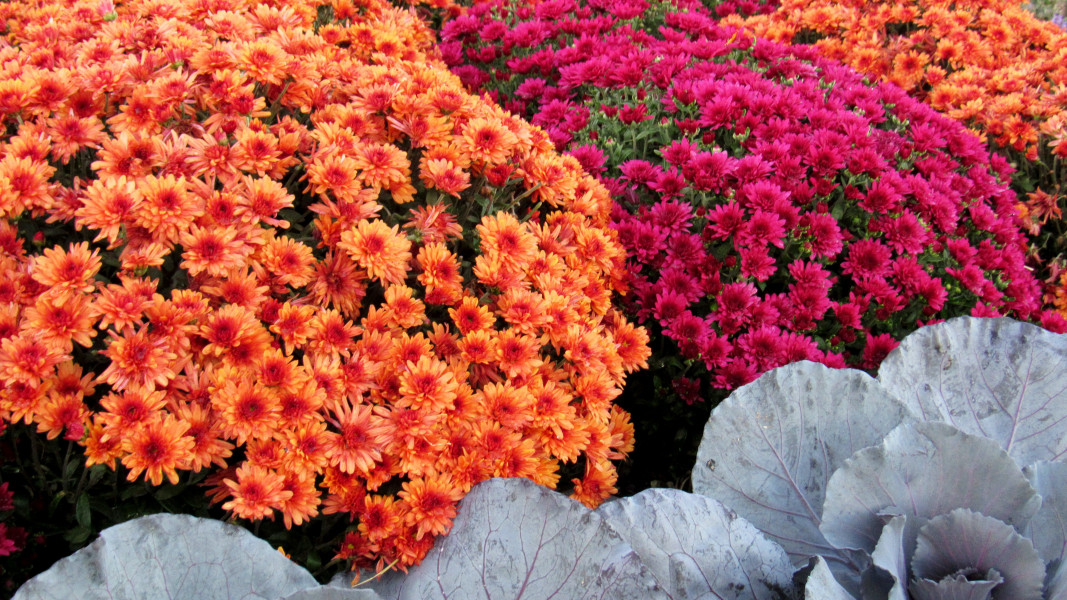Home Flower Chrysanthemum - Features
The house chrysanthemum is not large in size, as it is grown by artificially stopping its growth with specially developed preparations. Although there have been cases that a garden-sized plant was obtained from the acquired pruning of a house chrysanthemum.
Usually indoor chrysanthemums are low-growing varieties of mulberry or Chinese chrysanthemums, which are abundantly flowering shrubs with a height of 6 to 28 inches. In addition, their flowers can be small, up to 1 - 1.5 inches in diameter or large - up to 2 inches in diameter. The same varieties of house chrysanthemums differ in the shape of the flowers. In addition to Chinese chrysanthemums, Korean and Indian chrysanthemums are grown in the home culture.
Planting and caring for chrysanthemums outdoors
Chrysanthemum blooms at home usually in autumn and winter, but in order for its flowering to last as long as possible, you need to create optimal conditions for the plant and follow certain rules of care.
How To Care For Chrysanthemums
What conditions does the home chrysanthemum require? And if you are looking on how to grow chrysanthemums indoors, we will help you! First, it is necessary to establish a comfortable temperature regime, secondly, to observe the required level of illumination and thirdly, to maintain the water balance, optimal for the flower.
It is difficult to call a chrysanthemum a thermophilic plant, so in summer it feels best at a temperature of 64 - 73 ºF, in autumn-spring at 60 - 65 ºF, and in winter at 38 - 47 ºF. It is when this temperature regime is observed that many buds are tied and chrysanthemums bloom long and abundantly.
As for lighting, potted chrysanthemums are grown on window sills facing east or west, as the flowers can dry out in the southern windows from excess sun, and in the north they bloom poorly. But potted chrysanthemums feel best on cool but well-lit porches, balconies and loggias, and with the onset of real heat, it is advisable to take the chrysanthemum out into the yard.
During the active period of growth you will need to pinch and prune the chrysanthemum to form a dense and lush shrub. In addition, it is necessary to regularly remove dried inflorescences and yellowed leaves.
Watering Chrysanthemums
Successful cultivation of chrysanthemums requires proper watering. The chrysanthemum is hygrophilous, so the soil in its pot should be slightly moist at all times. Caring for chrysanthemums at home involves also moistening the soil during the period of active growth - at least two times a week. Make sure that the lump does not dry out, but excess moisture in the pot and pallet should also not be allowed.
In hot weather it is recommended to spray the chrysanthemum in the morning or evening. This does not mean that the flower should be sprayed so poorly, but this procedure refreshes the plant and adds to its attractiveness.
Caring for Chrysanthemum After Blooming
As soon as the chrysanthemum fades, it should be placed dormant. Cut its shoots and place the pot with the plant in the cellar, where the chrysanthemum will wait for spring at a temperature of 37 to 21 ºF. As soon as the chrysanthemum starts to sprout new shoots, it will need to be transplanted into a large container and return to its previous conditions.
And if you don’t have the time to wait for the chrysanthemum to bloom, just order a
chrysanthemum flower bouquet right away. There are plenty of beautiful arrangements that contain this lovely flower!

